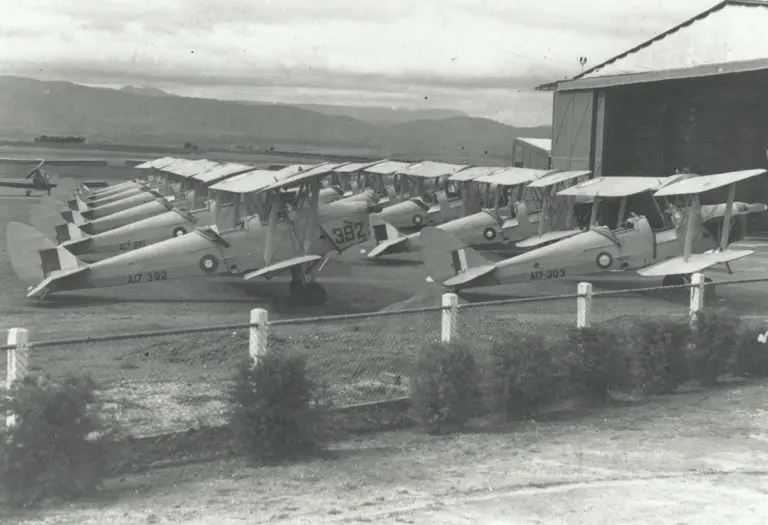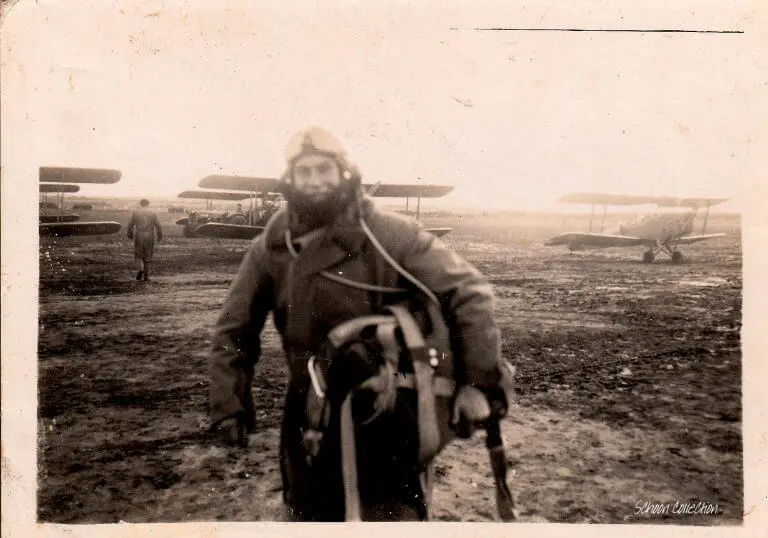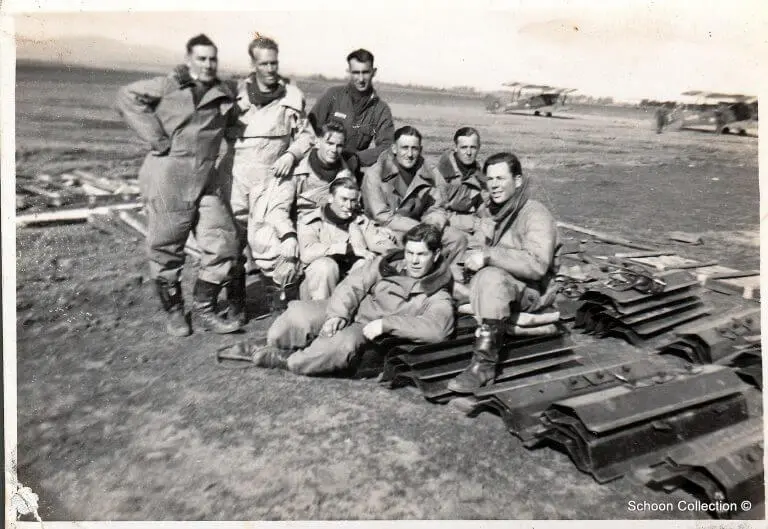During World War II, the RAAF established twelve Elementary Flying Training Schools (EFTS) to meet the rapid demand for pilots in an expanding Air Force. Located in all states except the Northern Territory, these Flying Training Schools provided initial pilot training to students under the Empire Air Training Scheme. The locations of these schools were as follows:
- No 1 EFTS – Parafield, South Australia and Tamworth, NSW
- No 2 EFTS – Archerfield, Queensland
- No 3 EFTS – Essendon, Victoria
- No 4 EFTS – Mascot, New South Wales
- No 5 EFTS – Narromine, New South Wales
- No 6 EFTS – Tamworth, New South Wales
- No 7 EFTS – Western Junction, Tasmania
- No 8 EFTS – Narrandera, New South Wales
- No 9 EFTS – Cunderdin, Western Australia
- No 10 EFTS – Temora, New South Wales
- No 11 EFTS – Benalla, Victoria
- No 12 EFTS – Bundaberg and Lowood, Queensland

No 7 EFTS – Western Junction, Tasmania
Tasmania’s only RAAF Flying Base during World War 2 was established at the site of the current Launceston Airport on 29th August 1940, and No 7 Elementary Flying Training School commenced training in September of that year. By the time training ended in late 1944, over 1800 pilot trainees had passed through the base as part of the Empire Air Training Scheme before the base was disbanded on 31st August 1945.
Excerpt from ‘Angel On My Wing’© – From the memoirs of R.W.G. SCHOON.
WESTERN JUNCTION, TASMANIA
“After a very rough crossing in the old ‘Narana’ (most of us were seasick) we spent a miserable time on the train to Burnie where we had landed due to fog. As our train wound its way along the coast, we were treated to tea and sandwiches by the local residents. Then a mad scramble to the windows as we approached our destination. Real aircraft with RAAF roundels. Tiger Moths, taking off and landing right alongside us. We were here at last!
‘Keep her straight!’ my Instructor called as I valiantly tried to apply rudder during our first couple of take offs. Gradually I got the feel and the reaction, and from a satellite field F/Lt. Tooley really gave me the works! In calm conditions he would let me do the take off, then at 10 feet he’d yell, ‘I’ve got it!’ and holding it down to gain speed he would then execute a semi-stall turn – one moment standing on our tail, and the next, pointing straight at the ground! At about 20 feet he would call, ‘Land it!’ While I was petrified at his manoeuvres, I guess self preservation was present as I soon mastered the art. I later found out that he always had a bet with the other Instructors as to whose student would solo first! I won him a few beers as I soloed in 7.05 hours and I was the only one on our course to solo at night, as the weather had restricted our exposure.
As our course progressed we learnt of the fall of Singapore and a certain Walter Mitty atmosphere prevailed amongst us, as we all knew Australia was virtually defenceless.


We were very fortunate to have an ex W/O Disciplinary on our course. At the age of 32, Charlie Williams had re-mustered to a lower ranking AC11 in order to become a pilot. He befriended me and shared the adjacent bunk. He taught himself aerobatics by the same method he used as a D11 Instructor. For long periods Charlie would sit opposite me reciting the control movements and I would check him from the book. He was placed in charge of our course and we were the smartest group, for when we worked, it was hard but very fair with no favours or vendettas. Even the despised Service Police respected him.
My Instructor had shown me one slow roll before he went on leave and I was given a check flight by his replacement. As he got out the cockpit he asked, ‘Have you been shown a slow roll yet?’ I replied, ‘Yes Sir.’ So he told me to go off and practice a few.
Climbing up above the beautiful Tasmanian scenery, I really felt quite grand and decided to take the Tiger up to 5,500 feet. Okay, straps tight then down to 110 mph, back stick and roll – piece of cake! . . . after all, I knew what the book said to do – but when I was upside down, the aircraft remained inverted. I dropped a few inches out into the slipstream and the motor, being deprived of fuel, stopped. A small stream of petrol from the overflow of the fuel tank gushed past my exposed face, and I must admit I was a little apprehensive, but thought, ‘I’ll give the Tiger her head.’ Slowly the nose dropped, speed increased, then gradually instead of blue sky I could see green fields – so, all would be well. To my surprise, with a tremendous roar the engine started again – I had not closed the throttle and the G Force had renewed the supply of fuel to the wind-milling propeller. When the vertical diving position was reached the old Tiger began to shudder and shake alarmingly! Looking straight down I saw a group of horrified golfers freeze in their tracks and stare straight back up at me! The air speed had already completed one revolution and was now on the 2nd time around! The adrenaline was really pumping and my only thought was, ‘I must pull out or I’m going to hit the bloody ground . . . yet if I pull back too tight the wings will fall off!’ Slowly the arc continued as did the awful shaking of the wings, when suddenly, blue sky and I was right side up again. Then try as I did, I couldn’t prevent the nose from rising straight up into the vertical climbing position and by this stage, I was convinced I had suffered a control failure. Just as I went to release my harness and bail out I felt the stick respond and managed to level the aircraft. It was a very sedate Trainee who landed back on the aerodrome and asked for more dual on slow rolls!




